It’s an overcast, gray October day and the gulls mewling over the sombre sea makes it seem even gloomier. I am standing at the marina at Kamena Vourla, a resort town on the north-east coast of Greece noted for its hot springs. I’m with a group of seniors who have traveled up the coast from Athens on a mystery trip, one that we will take by boat to visit a cluster of little islands known as the Lichadonisia Islands.
This archipelago, sandwiched like stepping-stones in the Malian Gulf between the north-east coast of Attika and the northern tip of Euboiea Island, has a mythological past.
The Myth
As the story goes, the hero Herakles won a bride as a battle prize. Her name was Deianira. As she was transported to the mainland by boat the ferryman, a wild centaur named Nessus, attempted to rape her. Herakles was watching from the shore and fired a poison arrow. As the half-man/half-horse lay dying he told Deianira to take some of his blood as a talisman to ensure that Herakles would be always faithful to her.
As time passed, Herakles took another woman as his favorite. Deianira remembered what the dying centaur had told her and rubbed some of the centaur’s blood on a cloak which she sent as a ‘gift’ for Herakles with a servant named Lichas. When Herakles put the cloak on, his skin began to burn and he realized that the cloak was poisoned so he threw the servant into the sea. Licha broke into pieces and Poseidon, the sea god, turned him into stones creating the Lichadonisia Islands.
Some, however, say that the islands were actually formed by a prehistoric volcanic explosion, further reshaped by an earthquake in 426 BC. But somehow on this dreary day the myth seems more believable.
The Mythical Islands
As our boat heads out beneath the overcast sky toward the islands, I can’t help but think about the myth. The scattered bits of black volcanic rock that jut up out of the stormy sea have a mysterious aura and even the small, wooded islets seem haunted and strangely eerie. On one there are some Roman ruins, on another a lone lighthouse.
There didn’t seem to be any sign of inhabitants other than basking seals and seagulls. The guide tells us to watch for the monachus sea turtles that are usually present in the area, but upon searching the murky depths we are unable to spot any.
We are now headed out toward Monolia Island, the largest of the group. According to what I’d read there are bars and pensions on Monolia, but as we draw nearer to the shore I notice only abandoned stone houses along the rocky shoreline. The guide explains that once there was a settlement here. As we pass by, I spot a black-clad mysterious figure on a trail leading into the trees behind the ruined houses. Could it be the ghost of a former resident?
The boat circles Monolia and anchors at the small Lichadonisi island just offshore where there is a pebble beach strewn with abandoned beach chairs. In the summer, this beach is popular with kayakers but this day it is eerily deserted. It is our intention to have a picnic here. The cold, damp weather didn’t deter a few folks who brave the chill and go swimming while the rest of us shiver under the straw umbrellas.
Kamena Voula
To compensate for the weather spoiling our picnic plans, we head back to Kamena Voula where we are treated to a delicious buffet lunch at the posh Galina Wellness Spa Resort. The neo-classical style restaurant serves both Greek and Italian cuisine. The resort, nestled in a valley of eucalyptus trees near the sea, offers a variety of activities including thermal spa facilities, swimming, fishing side trips to Delphi, Meteora and Thermopiles as well as to ski resorts at Parnassus.
Kamena Vourla is famous for its hot springs and boasts several resort hotels. Near the town is the monastery of Iera Moni Metamorfoseos tou Sotiris, built around the 11th century. Instead of visiting the monastery we are treated to a delightful hour at the Historical Information Centre of the Battle of Thermopylae which is located nearby.
The Famous Battle Site of Thermopylae
Thermopylae is where a narrow coastal pass existed. In antiquity it was known as “Hot Gates”, the place of hot springs and cavernous entrances to Hades. The battle that took place here is one of the most famous military last stands of all time.
In the summer of 480 BC a Greek force of approximately 7,000 men blocked the pass at Thermopylae to prevent the million-strong Persian army from invading. The Greeks, led by King Leonidas of Sparta, were vastly outnumbered but held off the Persians for seven days before their rear-guard was annihilated. A small force led by Leonidas blocked the only road by which the Persians could pass but after the second day of battlethey were betrayed by a local Greek. Aware that his force was outflanked, Leonidas dismissed most of the army and remained to guard their retreat with 300 Spartans and some Thespian and Thebans troops, most of who were killed. An impressive statue of Leonidis stands near the site of the battle.
The Historical Information Centre has three showrooms with collections of material based on the narrations of Herodotus and archaeological researchers.
In the first showroom, name ‘Leonidas’ there is a video with information about the hero and the operation of the centre. In the second showroom, named ‘Dienekes’ I don a pair of special glasses to watch a virtual reality movie detailing the historical facts about the Battle. In the third showroom named ‘Thermopylae’ I am able to activate screens at special interactive tables with more information about the history of the Battle. In this room there is an impressive display of helmets from the Bronze Age to the Hellenistic period by sculptor George Roussis. I meet the artist who is there to discuss his work and explain the history behind each of the helmets.
Later, as I stand on the beach where the famous battle took place I can almost sense the presence of the ghosts of the Spartan warriors. The mysterious islands of Lichadonisia and the memorial to this famous battle made my day one of mystical, myth-like adventures.
If You Go:
Kamena Vourla is 150 km north of Athens and can be reached by car on coastal Highway E75 or by KTEL bus service. The Historical Information Centre of Themopylae is a few miles north of the town on the coast road. Open every day 8.00 – 20.00.
Boats to Lichadonisia sail from the Marine Centre at Kamena Vourla.
Written by and photos by W. Ruth Kozak for EuropeUpClose.com

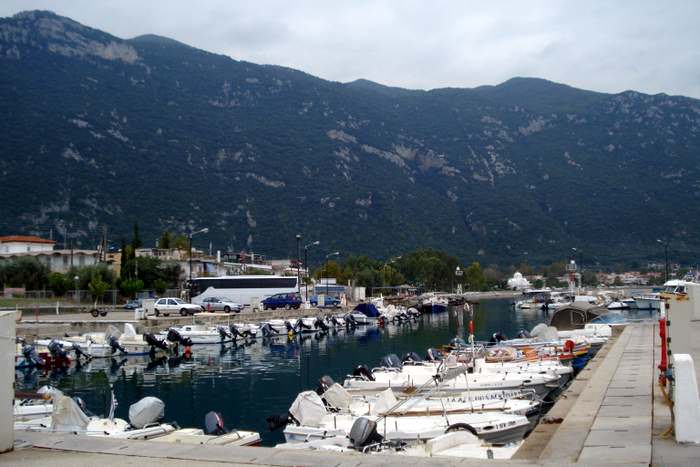

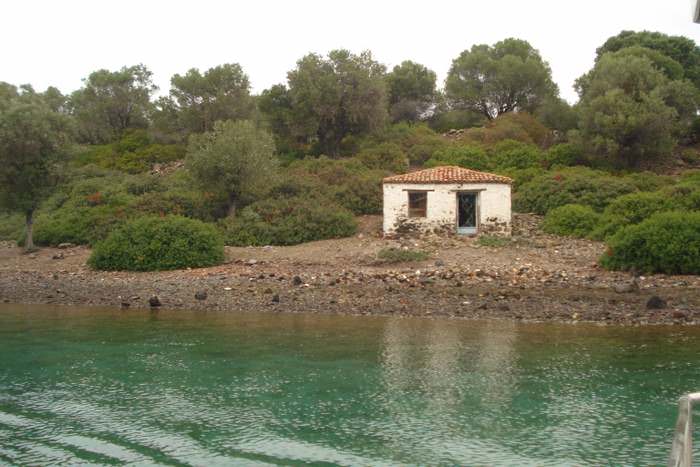
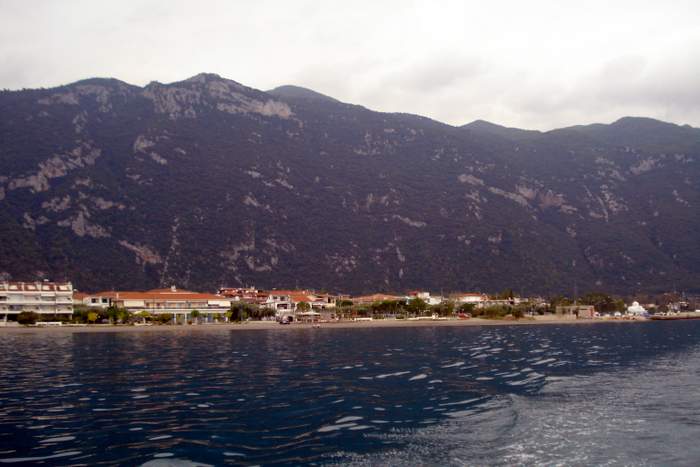
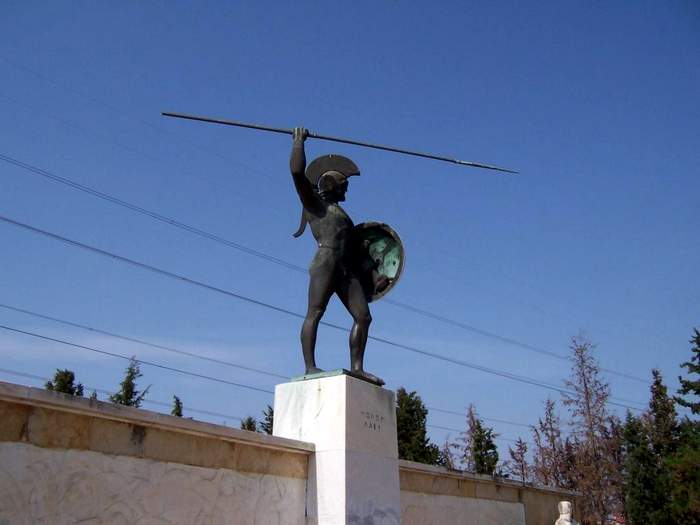
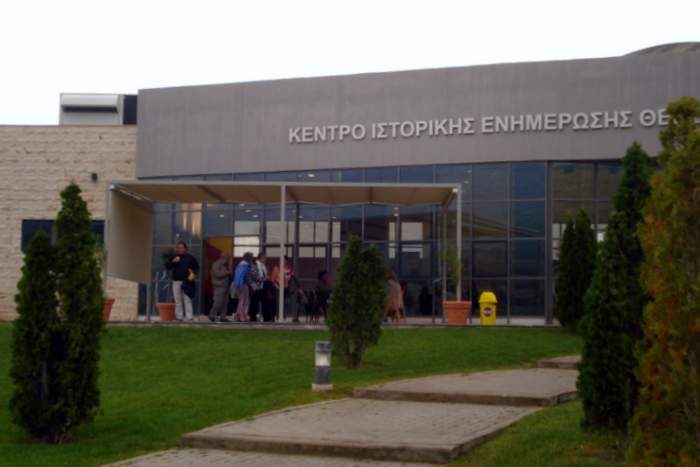
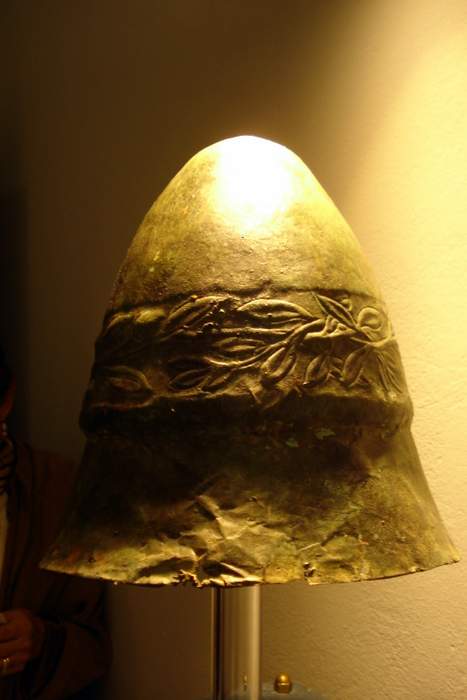
June 2015 BCATW Buzz
Friday 5th of June 2015
[…] Kozak had an article about some mysterious islands in Greece, published in Europe Up […]